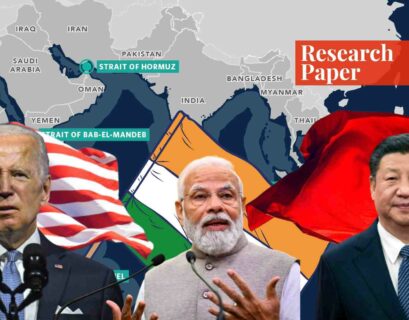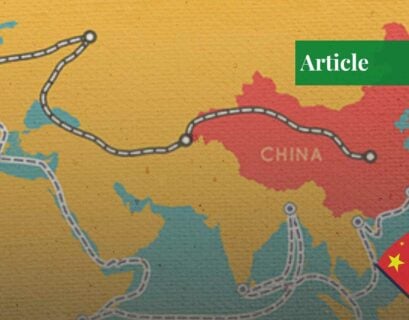Mr Hafiz Mohsin Nadeem is a student of international relations at DHA Suffa University, Karachi.
Introduction
The Brahmaputra, one of the world’s longest rivers, originates in the Kailash ranges of the Himalayas in Tibet, China, and flows to Arunachal Pradesh in India, then enters the state of Assam and flows through Bangladesh until it ends in the Bay of Bengal. Yarlung Zangbo is the name of this river in China, but when it enters Bangladesh, it changes to River Jamuna.
Moreover, it connects to the Ganges, the most sacred river in Hinduism. It’s the same river that bears the name of the Indian-Russian jointly developed cruise missile, BrahMos. Geographically, China controls a larger part of the Brahmaputra River but receives less advantage because of the Himalayas; much of its basins lie in a rain shadow.
On the other side, the parts that lie in India, Bangladesh, and Bhutan are said to be the world’s richest areas in terms of rainfall, whereas the Indian state of Meghalaya is sometimes considered the wettest place on earth, with 433 inches of annual rainfall.
China’s 14th Five-Year Plan and the Medog Dam
The conflict entered a new dimension when China’s 14th Five-Year Plan (21-25) came into being on March 20, 2021. The plan was approved for national development by the Chinese National People’s Congress (NPC), and it emphasizes the main objectives for the growth of hydropower as well as China’s desire to reduce its greenhouse gas emissions. In this plan, the building of China’s giant dam at Medog, at the Brahmaputra’s “Great Bend”, has sparked enormous debate and worries around the world, particularly in India.
On this behalf, Chinese officials claim that “run of the river” technology will be used to build such a dam and the water will not be stored. The Great Bend of the Brahmaputra at Namcha Barwa, where the river requires a sharp bend and drops over 2,000 meters, is an ideal location for hydropower generation. The dam, which can produce nearly 60 million kilowatts [60 GW] of hydropower in the lower reaches of the Yarlung Zangbo or Brahmaputra, can provide nearly 300 billion kWh annually, giving an idea of the enormous scale of the project proposed there.
Concerns for India and Bangladesh
The new project is said to be three times bigger than the world’s largest dam, the already Chinese-owned “Three Gorges Dam”. In this regard, Bangladesh, which maintains a good relationship with China, also protested over the proposed dam.
The Himalayan water war will affect India and Bangladesh, as both rely on the Brahmaputra’s water for agriculture and millions of people are also engaged with their daily water needs. Both India and Bangladesh are concerned that Beijing may soon be able to divert or store water in times of political unrest.
China’s Existing Dams on the Brahmaputra
It must be mentioned that China has already built a number of dams over this river course. In 2010, China finished construction of the 510 MW Zangmu Dam on the higher reaches of the Brahmaputra. Now being built are three additional dams at Dagu (640 MW), Jiacha (320 MW), and Jeixu.
China enjoys a unique advantage and power to control the flow of water to nations downstream because it is the only country in the region that is entirely upper riparian to the Brahmaputra. In this context, water, the most important natural resource in the world, is gradually becoming a weapon of geopolitics.
India’s Use of the Brahmaputra River
On the Indian side, since independence in 1947, the Brahmaputra has continuously been used as an important shipping route. Moreover, parts of its route are termed “National Waterway No. 2,” and it can be utilized for freight carriages and is now being done so. The river on this side is also capable of generating hydroelectric power generation, and India is already planning a 10,000 MW multipurpose hydropower project in the state of Arunachal Pradesh, possibly to counter any downstream Chinese aggression.
MoU between China and India
China and India both had an MoU signed in 2002 when China agreed to share hydrological information about Yarlung Zangbo (Brahmaputra) including its discharge at multiple points such as Nugesha, Yangcun, and Nuxia stations from June 01 to October 15 each year.
However, since the Dokhlam stand-off, China has declined to give hydrological data. Thoughts are that China is using its power over water flows as a tool to pressure states in downstream Southeast Asia into making concessions, notably on matters related to its Belt and Road Initiative.
The fundamental tenet that nations are permitted to use the water that flows within their boundaries was established in 1966 by the Helsinki Rules on the Uses of the Waters of International Rivers, but China is not a party to this treaty, so it has the leverage to make such projects without providing any information about them to its neighbors as discussed in those treaties.
There could be another possible harm for the region as it has already suffered multiple confrontations: the 1962 Sino-Indian War, the 1967 Chola Incident, the 1987 Sino-Indian Skirmish, and the 2017 Dokhlam standoff are among them.
Potential for Conflict
Brahmaputra or Yarlung Zangbo could provoke any limited or full-scale conflict between the two nuclear-armed and rising economies on Earth. Water an essential part of human life could make the situation worse in the already conflicted South Asian region. Moreover, Arunachal Pradesh and Aksai Chin are two mutually contested territories between China and India; both sides of the border are militarized, but no resolution has been achieved.
If you want to submit your articles, research papers, and book reviews, please check the Submissions page.
The views and opinions expressed in this article/paper are the author’s own and do not necessarily reflect the editorial position of Paradigm Shift.



















